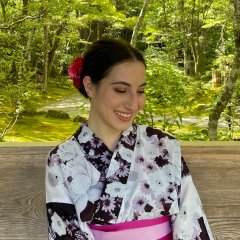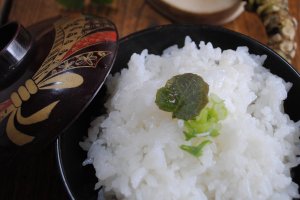Japan has long been renowned for its excellent cuisine. Popular Japanese food staples such as sushi and ramen are loved by people worldwide. However, to truly experience the country’s food culture you have to journey off the beaten path.
SAVOR JAPAN is your guide to the local food delicacies and sightseeing opportunities of Japan’s farming, fishing and mountain communities. Each area is carefully selected and certified by the Japanese Minister of Agriculture, Forestry and Fisheries. In these areas, food is deeply intertwined in the local cultures and offers insights into their varying lifestyles. SAVOR JAPAN seeks to promote these lesser known regions and encourages visitors to interact with locals to gain a deeper understanding of authentic Japanese cuisine.
This year, the minister certified six new areas. Take your taste buds on a delicious journey, and explore the new regions below.
Towada

Towada, located in Aomori Prefecture, is home to the soul food bara-yaki, which interestingly originated in a yakiniku restaurant run by Koreans who grilled beef left at the US military base after the war. Traditionally, bara-yaki consists of beef ribs and onions seasoned with a sweet and spicy soy sauce marinade and grilled on an iron plate. This warm dish often uses local beef or pork.
Aside from bara-yaki, Towada is abundant in natural beauty. Hike among waterfalls, lush nature, and the mountainous scenery at Lake Towada and the Oirase Gorge. For an urban outing, rent an e-bike, and enjoy Towada City’s hot springs and streets, which are lined with contemporary art.
Ishinomaki

Ishinomaki, situated on the northeastern coast of Honshu, is a huge fishing city and home to the rare sea squirt, also called sea pineapple. In Japan, this sea creature is only harvested in Hokkaido and along the Sanriku coast. Sea squirt zoni is a local delicacy that highlights the flavors of the sea and is filled with sea squirt stock, grilled sea squirt, local seafood and vegetables, naruto paste, salmon roe and baked mochi. The area is also home to a variety of other seafood based dishes. Try the local specialty seri and the ishinomaki seri nabe, which is a warm soup of rice cakes, oysters, and seri (water dropwort). Seri is a Japanese herb characterized by its strong herbal aroma and adds a refreshing flavor to seri nabe. Also, enjoy the area’s anago (saltwater eel) sushi and rice bowls made with quality sasanishiki rice.
Given its close proximity to Sendai City, Ishinomaki is a wonderful nearby getaway. Rent a bike and enjoy coastal sightseeing spots, including Ishinomaki Minamihama Tsunami Reconstruction Memorial Park. The city is also an ideal spot to try fishing experiences with locals. If you are an animal lover, go island hopping to nearby Kinkasan, which is filled with deer, and Tashirojima, also known as cat island.
Ina

Everyone loves noodles. Ina City is the birthplace of Shinshu soba. This local food has been enjoyed by residents for generations and is traditionally served with a spicy soup made from grilled miso paste and daikon radish juice. Be sure to try the richly flavored Irirnoya native soba. For a less conventional food experience, try Ina’s ancient insect cuisine of locusts, bee larva and zazamushi boiled in soy.
After you have had your fill of soba (and perhaps insects), explore the plentiful area. In springtime, Takato Castle Ruins Park is renowned as one of Japan’s best cherry blossom viewing spots and in all seasons, is a great place to see remnants of the Edo Period. The area is also filled with outdoor activities and traditional workshops such as paragliding, mountain biking, harvesting fruits and vegetables, soba making, historical tours, and more!
Saku

Blessed with majestic mountains, fresh water, cool climate and natural resources, Saku in Nagano Prefecture is one of Japan’s leading sake brewing areas. This relatively small region has been brewing sake for over 350 years and today features 13 breweries. Saku also grows premier highland produce and boasts a food culture centered on miso-based dishes and pickles, all of which pair wonderfully with sake. The region’s traditional carp dish is also a must-try.
Saku is a picturesque countryside getaway filled with hot springs, stargazing opportunities, sunny weather, tranquil shrines and temples and mountainous vistas. Learn about sake culture by lodging at KURABITO STAY, which is a one of a kind hotel where you can brew sake and stay in the brewery. Before you leave Saku, be sure to peruse its quality agricultural products for a delicious souvenir.
Masuda

Masuda City in Shimane Prefecture is a naturally abundant area surrounded by the Chugoku Mountains, Sea of Japan, and the Takatsu River, which produces some of Japan’s highest quality water. Thanks to this steady flow of water, Masuda’s cuisine features locally harvested wasabi and natural ayu (sweetfish). Enjoy the bite of uzume rice, in which fluffy rice is placed over freshly grated wasabi and submerged in dashi (Japanese soup stock), and the fresh flavor of natural ayu caught in the Takatsu River.
Masuda’s natural beauty makes it a paradise for outdoor enthusiasts. Hike around the forests, rocky coastlines, gorges, rock formations and waterfalls of the Chugoku Mountains area, and visit Karaota Suisen Park to see two million daffodils in bloom against the sea. Around the Takatsu River, immerse yourself in the local culture with an uzume rice making class, zen meditation, matcha making, tofu making and a goemon bath. Then, learn about Masuda’s history at Ikoji Temple and Manpukuji Temple.
Tsuyama

Beef lovers rejoice! Tsuyama was once the highest consumer of beef in Japan and today, still produces a variety of quality beef and specialty dishes. One of the region’s most popular dishes is its sozuri hot pot, which is a rich soy sauce based soup filled with premium beef, local vegetables and tofu. Local beef nikogori (jellied beef broth) and yomenakase (beef aorta) offer unique textural experiences. The nikogori’s smooth gelatin texture melts in your mouth, leaving a rich aftertaste, while yomenakase’s simple seasoning of salt and pepper highlights its crispy texture. Street food fans must try Tsuyma’s version of okonomiyaki. This Japanese savory pancake, filled with cabbage and topped with sweet and savory sauces, is given a regional twist with the addition of beef. The region’s phenomenal beef jerky makes a perfect snack on the go, and its Tsuyama hormone udon is a harmonious dish that perfectly balances the flavors and textures of soft offal and chewy noodles.
After filling up on beef, explore Tsuyama’s historical sites. Tsuyama Castle is one of Japan’s top cherry blossom viewing spots, and the area’s Joto and Josai districts are filled with preserved traditional buildings and gardens. You can also join workshops such as weaving, meditation and vegetable harvesting. If you are a train enthusiast, be sure to stop by the Tsuyama Manabi Railway Museum. Then, refuel with the city’s over 50 teppanyaki and yakiniku restaurants. Try to visit as many as you can, and find your next favorite dish!





































